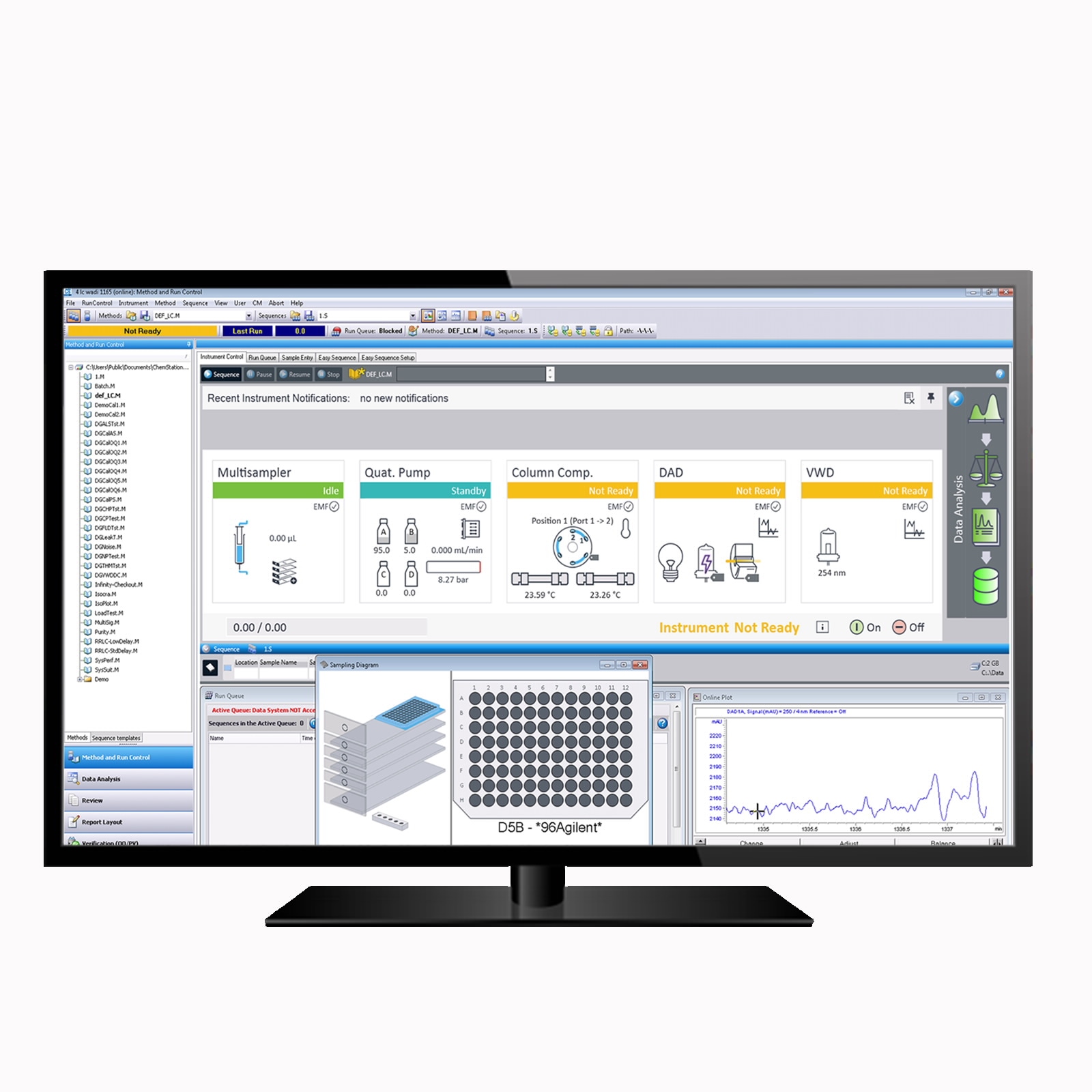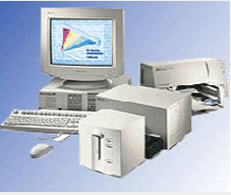

- #AGILENT CHEMSTATION TUTORIAL HOW TO#
- #AGILENT CHEMSTATION TUTORIAL SOFTWARE#
- #AGILENT CHEMSTATION TUTORIAL TRIAL#
There are some basics that can be checked that may be the solution if you are having this problem. There’s nothing like preparing your samples and starting chemstation, only to see “instrument offline”.
#AGILENT CHEMSTATION TUTORIAL SOFTWARE#
Save these changes to your method, and the software will now calculate the amounts of your unknowns based on your calibration table! The peak table will come up, and you can name the peaks, and designate their concentrations. You can click on the icon to define peaks, click at the start of the peaks, then click at the end of the peaks.

Peak selection can be done graphically on the chromatogram. After integrating your signals, the next step is calibrating. Next it wants you to click where you want the integration off event to stop:Īfter you analyze, you get the chromatogram with the unwanted peaks removed:Ĥ. It then wants you to click on the chromatogram where you want to start the cut off: I can click on integration off, on the bottom of the screen. In this example, I would like to remove some non peaks at the start of the chromatogram. There are several other options you can continually add to your integration table to fine tune your chromatogram.
#AGILENT CHEMSTATION TUTORIAL TRIAL#
It’s more or less a trial and error approach. You can keep clicking analyze to see how your changes affect the integration. Next select integration events, the two values you want to focus on at first are threshold and width. Make sure you have the proper channel selected at the top, for the chromatogram that you want to adjust. Whichever calibration levels you choose to have, make sure you have them ready and know which vials they are in, and designate that in your sequence table.ģ. Then I would want to choose standards at 30, 60, and 90 ng/ul, perhaps. So, if my samples will have a concentration in a range of 50-75 ng/ul for example. If you expect your samples to be within a certain range, you want to select standard concentrations that will cover that range. In my example, I am using three levels of calibration. Set up a sequence of runs with your calibration standard(s). You want to have a good idea of what your method parameters will be before you start building your calibration table.Ģ. This first step is pretty straightforward. Have your method(s) that you would like to use saved and ready. This should work in both Ezchrom Elite as well as Openlab Ezchrom.ġ.
#AGILENT CHEMSTATION TUTORIAL HOW TO#
It would be nice to have the source code of Target software that was compiled on the oringal unix 10.2 and updated to a linux service system with the Varitas file system with Red Hat with xfce or something liter to really get some performance.This is a quick guide on how to build a calibration table in Ezchrom. I am still looking for something that can use a server type data system for 30 machines which will able to run.


Final note it is funny Target came out so many years ago and it is so beyond now-a-days production softwares. cdf, but i would like to find alternate and i have tried Mass hunter ( no where near for production and the learning curve on it), chemstation for MS is nice but it still seems a step backgrounds since when you are using several stations and working up data it slower even if it has the ability to use updated hardware, and Chemstation B will not work for multisystems. It works on any chemstation software but not for the Chemstation B 32bit version unless we change it to. I am at the moment using a Old Target Thru-put running on HP unix 10.2, and it runs very fast around 10 to 15 users but the hard ware is very out dated.


 0 kommentar(er)
0 kommentar(er)
